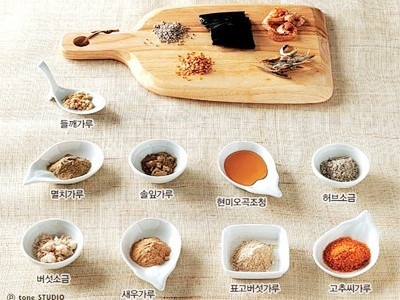The wide reach of the internet enables us to access many informational resources regarding Korean food, online and offline. Whether they be professional or personal sites, books, magazines, or blogs, there is much information in English and Korean to be perused by the Korean food lover. Amidst this avalanche, it can be difficult to discern whether a source is providing accurate information unless one knows a bit about Korean cuisine.
There are certain things that one can look out for when evaluating a source that will make it more
likely that the information provided is correct. It does not require a deep understanding of the food, but a discernment for what makes a source
more credible. The first question one must ask is, Who is the source? If it is a business, one should question their personal interests in regards to Korean cuisine. There should be a consistency in what they say about the food and the information they present on promotional materials. Professional sources, including professional blogs, can be great as they often take a serious approach to writing articles about Korean food. Personal bloggers can be great as well, but do not have an external check on their credibility like customers or a supervisor. They only answer to themselves and can write whatever they want as long as it does not violate their site host or blog publisher's guidelines. But I have comes across a number of personal bloggers that do care and do a much better job than some big, established media outlets, so the quality can vary.
Whether you are evaluating a personal or professional source, you need to assess how objective the writer is in presenting Korean food. Does he or she do the proper research and try to understand the information collected in an objective way? I don't think one needs to love Korean food or even like it to write about it objectively.
Jeffrey Steingarten really did not like kimchi before he gave it a chance and tried out many samples at various Korean restaurants. It is important to keep in mind the writer's attitude toward the subject in order to determine whether he or she is being objective. Is the writer allowing his or her attitude to color the presentation of Korean food? Or is the writer presenting it objectively
regardless of his or her own personal feelings? Also, does the writer allow for critical discussion about the ideas presented? For a business, it is understandable that they would not publish comments that go against their professional interests. Their interests may not be justifiable from a moral or logical standpoint, but a business is run for profit and needs to make money in order to survive. There are businesses that have a genuine interest in sharing information, but ultimately, it depends on the individual running the site and their own sense of ethics. A personal blogger may not be driven by profit, but may still have a personal interest in how the site is run. Of course, every blog host has the right to moderate comments according to how they see fit. But if the author deletes respectful, yet critical comments, it is obvious that he or she is not interested in frank discussion, but just promoting their own
view or pride. Ultimately, it is up to the reader to assess what he or she is reading in a proper manner, to make sense of the information received in a way that is
critical and meaningful. Even the best sources can get it wrong at some point despite their best effort.
So the question is not only the credibility of the source, but the
accuracy of the information. At the very least, the writer should be able to substantiate his or her argument by providing adequate proof. Just saying that Korean food
looks like a mixture of certain cuisines does not provide evidence that it is so. There needs to be greater evidence in terms of an exploration into the
history and background of Korean food. Korean cuisine certainly has influences from other cultures, but it has also provided its
own influence to other
cultures as well. This also does not take into account the vast
indigenous sources of Korean cuisine. In order to substantiate any claim about Korean food, one must use sources that are historically and culturally valid from credible, verified sources such as documents, artifacts, cultural heritages, etc. Of course, it is impractical to expect every student of Korean cuisine to be an archaeologist or historian. Still, there are ways to verify certain things through proper research and documentation. In order to truly understand the nature of a cuisine, one must study the history and culture behind it.
Information about Korean food in English is very limited compared to resources in Korean. It makes sense that the culture of origin would have more resources regarding its cuisine than foreign cultures. It is in the personal interest of every culture to know its history, understand and preserve its culture, and carry out its valued traditions. Foreign sources only become available when another culture takes interest in its cuisine. As Korean food was not particularly known or popular in English speaking countries until recently, it would be a given that
English resources would be limited in comparison to Korean ones. Sometimes, we need to dig for information instead of accepting what has been presented to us. We may be surprised to learn that there is a greater world than we have realized.







